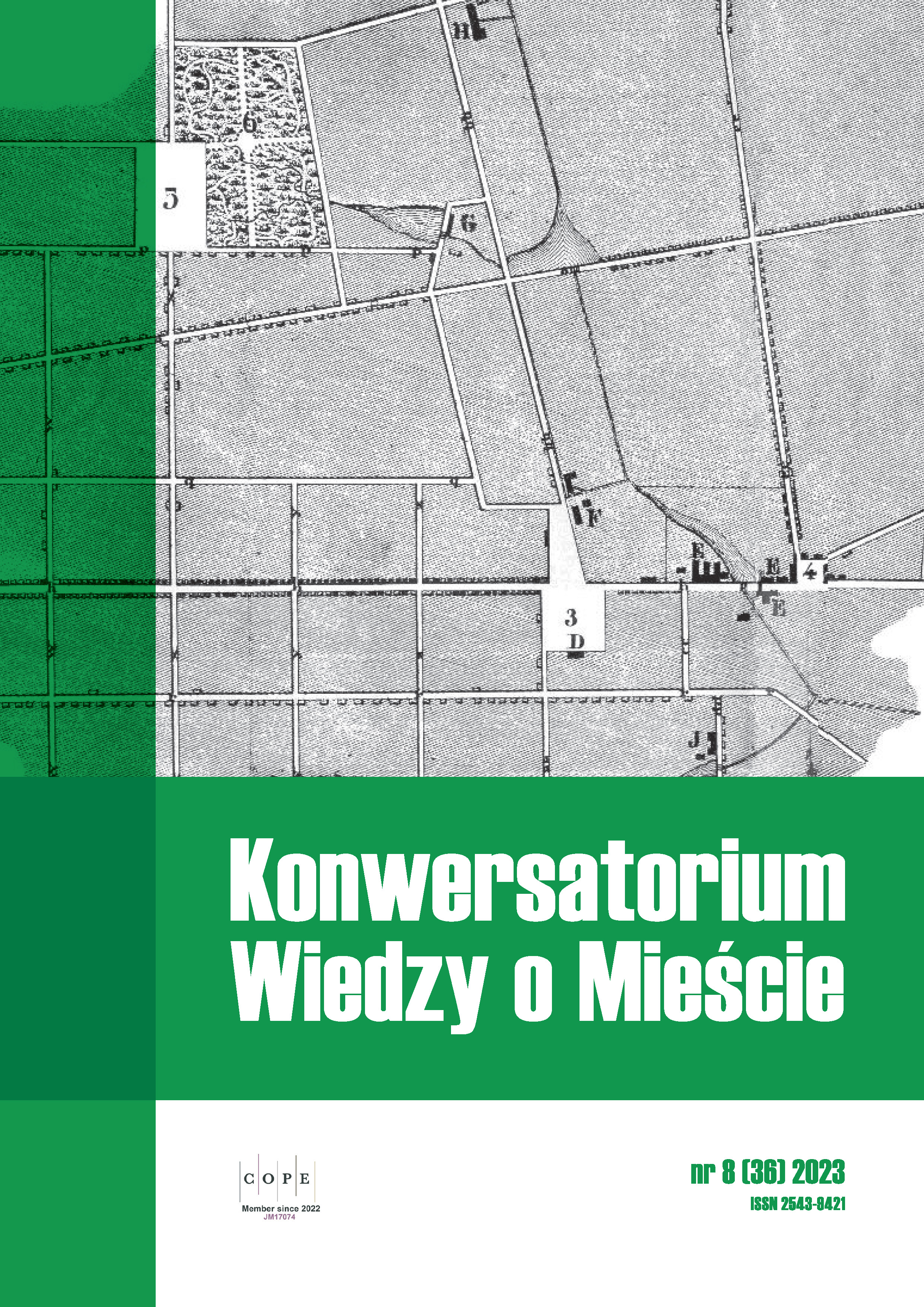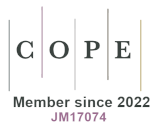Znaczenie funkcji kontrolno-zarządczej miast w skali międzynarodowej
DOI:
https://doi.org/10.18778/2543-9421.08.09Słowa kluczowe:
funkcja kontrolno-zarządcza, miasto globalne, miasto światowe, rankingAbstrakt
W literaturze przedmiotu jest wiele opracowań na temat dużych miast pod kątem ich funkcji o charakterze międzynarodowym, takich jak: funkcje kontrolno-zarządcze (command and control), funkcje światowe (world city) oraz funkcje globalne (global city). Nie ma jednak kompleksowych badań miast, które pokazałyby pełniejszy obraz ich oddziaływania na arenie międzynarodowej i znaczenia funkcji kontrolno-zarządczej wobec miast globalnych (global city) i światowych (world city), dlatego podjęto próbę uzupełnienia tej luki badawczej. Celem artykułu jest wskazanie zależności pomiędzy funkcjami kontrolno-zarządczą, światową i globalną miast. Na podstawie udziału tych funkcji w miastach wyróżniono cztery ich typy. Podział uwzględnia dominację jednej z funkcji lub zrównoważenie wszystkich. Zaproponowano również nowe podejście do badań nad funkcją kontrolno-zarządczą nie tylko w skali świata, kontynentu, kraju, ale także w mniejszych jednostkach administracyjnych, takich jak: województwo, powiat czy gmina.
Bibliografia
Alderson, A.S., Beckfield, J. (2004). Power and position in the world city system. American Journal of Sociology, 109(4), 811–851.
Google Scholar
DOI: https://doi.org/10.1086/378930
Anttiroiko, A.-V. (2015). City branding as a response to global intercity competition. Growth and Change, 46(2), 233–252. http://doi.org/10.1111/grow.12085
Google Scholar
DOI: https://doi.org/10.1111/grow.12085
AT Kearney. (2018). 2018 Global Cities Report: Learning from the East: Insights from China’s urban success. https://www.kearney.com/service/global-business-policy-council/gcr/2018-full-report
Google Scholar
AT Kearney. (2022). Readiness for the storm: The 2022 Global Cities Report. https://www.kearney.com/service/global-business-policy-council/gcr/2022-full-report
Google Scholar
Beaverstock, J.V., Smith, R.G, Taylor, P.J. (1999). A roster of world cities. Cities, 16(6), 445–458. https://doi.org/10.1016/S0264-2751(99)00042-6
Google Scholar
DOI: https://doi.org/10.1016/S0264-2751(99)00042-6
Beaverstock, J., Smith, R.G., Taylor, P.J., Walker, D.R.F., Lorimer, H. (2000). Globalization and world cities: Some measurement methodologies. Applied Geography, 20(1), 43–63. https://doi.org/10.1016/S0143-6228(99)00016-8
Google Scholar
DOI: https://doi.org/10.1016/S0143-6228(99)00016-8
Beldebros, R., Benoit, F., Derudder, B. (2022). World city innovation and service networks and economic growth. Papers in Regional Science, 101(4), 979–1000. https://doi.org/10.1111/pirs.12687
Google Scholar
DOI: https://doi.org/10.1111/pirs.12687
Bogdański, M. (2019). Ewolucja bazy ekonomicznej a wzrost gospodarczy miast województwa warmińsko-mazurskiego. Studia Regionalne i Lokalne, 77(3), 103–132. https://doi.org/10.7366/1509499537706
Google Scholar
Borchert, J.R. (1978). Major control points in American economic geography. Annals of the Association of American Geographers, 68(2), 214–232. https://doi.org/10.1111/j.1467-8306.1978.tb01192.x
Google Scholar
DOI: https://doi.org/10.1111/j.1467-8306.1978.tb01192.x
Cohen, R.B. (1981). The new international division of labor, multinational corporations and urban hierarchy. W: M. Dear, A. Scott (red.), Urbanization and urban planning in capitalist societies (s. 287–316). Routledge. https://doi.org/10.4324/9781351068000-12
Google Scholar
DOI: https://doi.org/10.4324/9781351068000-12
Csomós, G. (2013). The command and control centers of the United States (2006/2012): An analysis of industry sectors influencing the position of cities. Geoforum, 50, 241–251. https://doi.org/10.1016/j.geoforum.2013.09.015
Google Scholar
DOI: https://doi.org/10.1016/j.geoforum.2013.09.015
Csomós, G., Vida, Z.V., Lengyel, B. (2020, 19 września). Science cities seek new connections. Nature, 585, 58–59. https://doi.org/10.1038/d41586-020-02579-9
Google Scholar
DOI: https://doi.org/10.1038/d41586-020-02579-9
Derudder, B., Feng, X., Shen, W., Shao, R., Taylor, P.J. (2022). Connections between Asian and European world cities: Measurement, analysis, and evaluation. Land, 11(9), artykuł 1574. https://doi.org/10.3390/land11091574
Google Scholar
DOI: https://doi.org/10.3390/land11091574
Derudder, B., Taylor, P.J. (2020). Three globalizations shaping the twenty-first century: Understanding the new world geography through its cities. Annals of the American Association of Geographers, 110(6), 1831–1854. https://doi.org/10.1080/24694452.2020.1727308
Google Scholar
DOI: https://doi.org/10.1080/24694452.2020.1727308
Dorocki, S., Raźniak, P., Winiarczyk-Raźniak, A. (2019). Changes in the command and control potential of European cities in 2006–2016. Geographia Polonica, 92(3), 275–288. https://doi.org/10.7163/GPol.0149
Google Scholar
DOI: https://doi.org/10.7163/GPol.0149
Friedmann, J. (1986). The world city hypothesis. Development and Change, 17(1), 69–83. https://doi.org/10.1111/j.1467-7660.1986.tb00231.x
Google Scholar
DOI: https://doi.org/10.1111/j.1467-7660.1986.tb00231.x
Friedmann, J., Wolff, G. (1982). World city formation: An agenda for research and action. International Journal of Urban & Regional Research, 6(3), 309–344. https://doi.org/10.1111/j.1468-2427.1982.tb00384.x
Google Scholar
DOI: https://doi.org/10.1111/j.1468-2427.1982.tb00384.x
Globalization and World Cities Research Network. (2018). The world according to GaWC 2018. https://www.lboro.ac.uk/microsites/geography/gawc/world2018t.html
Google Scholar
Godfrey, B.J., Zhou, Y. (1999). Ranking world cities: Multinational corporations and the global urban hierarchy. Urban Geography, 20(3), 268–281. https://doi.org/10.2747/0272-3638.20.3.268
Google Scholar
DOI: https://doi.org/10.2747/0272-3638.20.3.268
Goldberg, M., Hedrick-Wong, Y., Bhaskaran, M., Gang, F., Lever, W., Levi, M., Pellegrini, A., Sassen, S., Taylor, P.J. (2008). Worldwide Centers of Commerce Index. MasterCard Worldwide. https://www.scpd.gov.kw/archive/new/3.pdf
Google Scholar
Hall, P. (1966). The world cities. Heinemann.
Google Scholar
Hymer, S. (1972). The multinational corporation and the law of uneven development. W: J. Bhagwati (red.), Economics and world order (s. 113–140). Macmillan.
Google Scholar
Korcelli-Olejniczak, E. (2021). Small towns in settlement systems: A return to the foreground? W: J. Bański (red.), The Routledge handbook of small towns (s. 20–31). Routledge. https://doi.org/10.4324/9781003094203-4
Google Scholar
DOI: https://doi.org/10.4324/9781003094203-4
Korycka-Skorupa, J. (2007). Trójkąt Osanna jako forma prezentacji danych statystycznych i legenda map tematycznych. Polski Przegląd Kartograficzny, 39(4), 340–353.
Google Scholar
Krätke, S. (2014). How manufacturing industries connect cities across the world: Extending research on “multiple globalizations”. Global Networks, 14(2), 121–147. https://doi.org/10.1111/glob.12036
Google Scholar
DOI: https://doi.org/10.1111/glob.12036
Kukuła, K., Luty, L. (2015). Propozycja procedury wspomagającej wybór metody porządkowania liniowego. Przegląd Statystyczny, 62(2), 219–231. https://doi.org/10.5604/01.3001.0014.1748
Google Scholar
DOI: https://doi.org/10.5604/01.3001.0014.1748
Lyons, D., Salmon, S. (1995). World cities, multinational corporations, and urban hierarchy: The case of the United States. W: P.L. Knox, P.J. Taylor (red.), World cities in a world-system (s. 98–114). Cambridge University Press. https://doi.org/10.1017/CBO9780511522192.007
Google Scholar
DOI: https://doi.org/10.1017/CBO9780511522192.007
Masik, G., Grabkowska, M. (2020). Practical dimension of urban and regional resilience concepts: A proposal of resilience strategy model. Miscellanea Geographica, 24(1), 30–34. https://doi.org/10.2478/mgrsd-2019-0028
Google Scholar
DOI: https://doi.org/10.2478/mgrsd-2019-0028
Murphy, A., Tucker, H. (red.). (2023, 8 czerwca). The Global 2000. Forbes. https://www.forbes.com/lists/global2000/?sh=39dfea3d5ac0
Google Scholar
Neal, Z.P., Derudder, B., Taylor, P. (2020). Forecasting the world city network. Habitat International, 106, artykuł 102146. https://doi.org/10.1016/j.habitatint.2020.102146
Google Scholar
DOI: https://doi.org/10.1016/j.habitatint.2020.102146
Parnreiter, C. (2019). Global cities and the geographical transfer of value. Urban Studies, 56(1), 81–96. https://doi.org/10.1177/0042098017722739
Google Scholar
DOI: https://doi.org/10.1177/0042098017722739
Ratajski, L. (1989). Metodyka kartografii społeczno-gospodarczej (wyd. 2). Państwowe Przedsiębiorstwo Wydawnictw Kartograficznych.
Google Scholar
Raźniak, P., Dorocki, S., Rachwał, T., Winiarczyk-Raźniak, A. (2021). The role of the energy sector in the command and control function of cities in conditions of sustainability transitions. Energies, 14(22), artykuł 7579. https://doi.org/10.3390/en14227579
Google Scholar
DOI: https://doi.org/10.3390/en14227579
Raźniak, P., Dorocki, S., Winiarczyk-Raźniak, A. (2017). Permanence of economic potential of cities based on sector development. Chinese Geographical Sciences, 1(27), 123–136. https://doi.org/10.1007/s11769-017-0850-5
Google Scholar
DOI: https://doi.org/10.1007/s11769-017-0850-5
Raźniak, P., Dorocki, S., Winiarczyk-Raźniak, A. (2018). Eastern European cities as command and control centres in a time of economic crisis. Acta Geographica Slovenica, 58(2), 101–110. http://doi.org/10.3986/AGS.3124
Google Scholar
DOI: https://doi.org/10.3986/AGS.3124
Raźniak, P., Dorocki, S., Winiarczyk-Raźniak, A., Płaziak, M., Szymańska, A.I. (2016). Lokalizacja ośrodków kontroli i zarządzania elementem stabilności gospodarczej ośrodków miejskich w Europie Środkowo-Wschodniej. Prace Komisji Geografii Przemysłu Polskiego Towarzystwa Geograficznego, 30(2), 38–54. https://doi.org/10.24917/20801653.302.3
Google Scholar
DOI: https://doi.org/10.24917/20801653.302.3
Raźniak, P., Winiarczyk-Raźniak, A., Dorocki, S., Csomós, G. (2022). Zmiany rozmieszczenia funkcji kontrolno-zarządczych na świecie w latach 2006–2018. Prace Komisji Geografii Przemysłu Polskiego Towarzystwa Geograficznego, 36(3), 7–19. https://doi.org/10.24917/20801653.363.1
Google Scholar
DOI: https://doi.org/10.24917/20801653.363.1
Robinson, J. (2005). Urban geography: World cities, or a world of cities. Progress in Human Geography, 29(6), 757–765. https://doi.org/10.1191/0309132505ph582pr
Google Scholar
DOI: https://doi.org/10.1191/0309132505ph582pr
Sassen, S. (1991). The global city: New York, London, Tokyo. Princeton University Press.
Google Scholar
Sassen, S. (2006). Cities in a world economy (wyd. 3). Pine Forge Press.
Google Scholar
Sassen, S. (2009a). Cities in today’s global age. SAIS Review of International Affairs, 29(1), 3–34. https://doi.org/10.1353/sais.0.0034
Google Scholar
DOI: https://doi.org/10.1353/sais.0.0034
Sassen, S. (2009b). The specialised differences of cities matter in today’s global economy. W: S. Whimster (red.), Reforming the city: Responses to the global financial crisis (s. 209–236). London Metropolitan University.
Google Scholar
Sassen, S. (2012). Cities in a world economy (wyd. 4). Sage Publications.
Google Scholar
DOI: https://doi.org/10.1002/9780470670590.wbeog069
Śleszyński, P. (2015). Economic control functions in Poland in 2013. Geographia Polonica, 88(4), 701–708. https://doi.org/10.7163/GPol.0041
Google Scholar
DOI: https://doi.org/10.7163/GPol.0041
Taylor, P.J. (2017). The new political geography of corporate globalization. L’Espace Politique, 32. https://doi.org/10.4000/espacepolitique.4330
Google Scholar
DOI: https://doi.org/10.4000/espacepolitique.4330
Taylor, P.J., Csomós, G. (2012). Cities as control and command centres: Analysis and interpretation. Cities, 29(6), 408–411. https://doi.org/10.1016/j.cities.2011.09.005
Google Scholar
DOI: https://doi.org/10.1016/j.cities.2011.09.005
Taylor, P.J., Derudder, B. (2014). World city network: A global urban analysis. Routledge.
Google Scholar
DOI: https://doi.org/10.4324/9781315730950
Wdowicka, M. (2016). Miasta światowe jako węzły w sieci powiązań globalnej gospodarki. Problemy Rozwoju Miast, 4, 107–117. https://www.prm-irm.com/zeszyt-iv2016.html
Google Scholar
Westaway, J. (1974). The spatial hierarchy of business organizations and its implications for the British urban systems. Regional Studies, 8(2), 145–155. https://doi.org/10.1080/09595237400185141
Google Scholar
DOI: https://doi.org/10.1080/09595237400185141
Zuzańska-Żyśko, E. (2021). Role of advanced producer services shaping globalization processes in a post-industrial region: The case of the Górnośląsko-Zagłębiowska Metropolis. Sustainability, 13(1), artykuł 211. https://doi.org/10.3390/su13010211
Google Scholar
DOI: https://doi.org/10.3390/su13010211
Pobrania
Opublikowane
Jak cytować
Numer
Dział
Licencja

Utwór dostępny jest na licencji Creative Commons Uznanie autorstwa – Użycie niekomercyjne – Bez utworów zależnych 4.0 Międzynarodowe.









